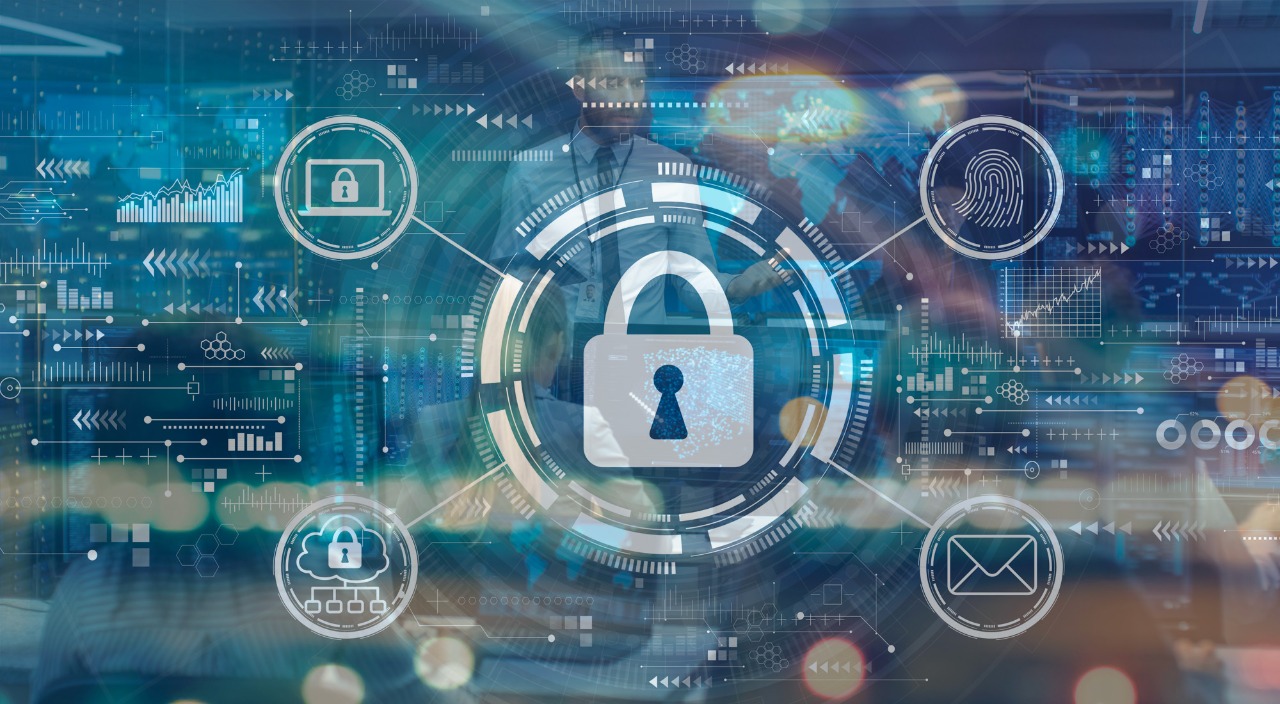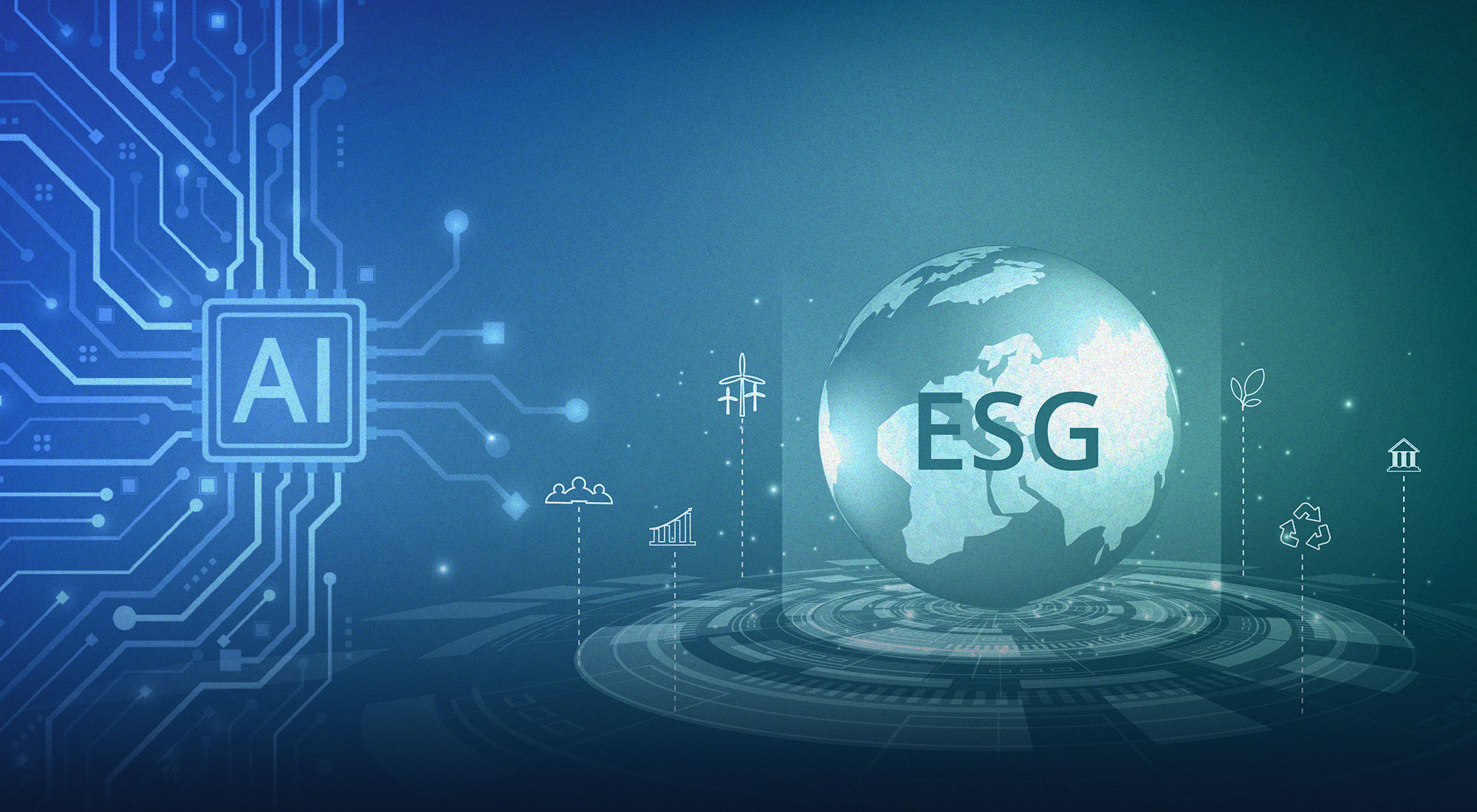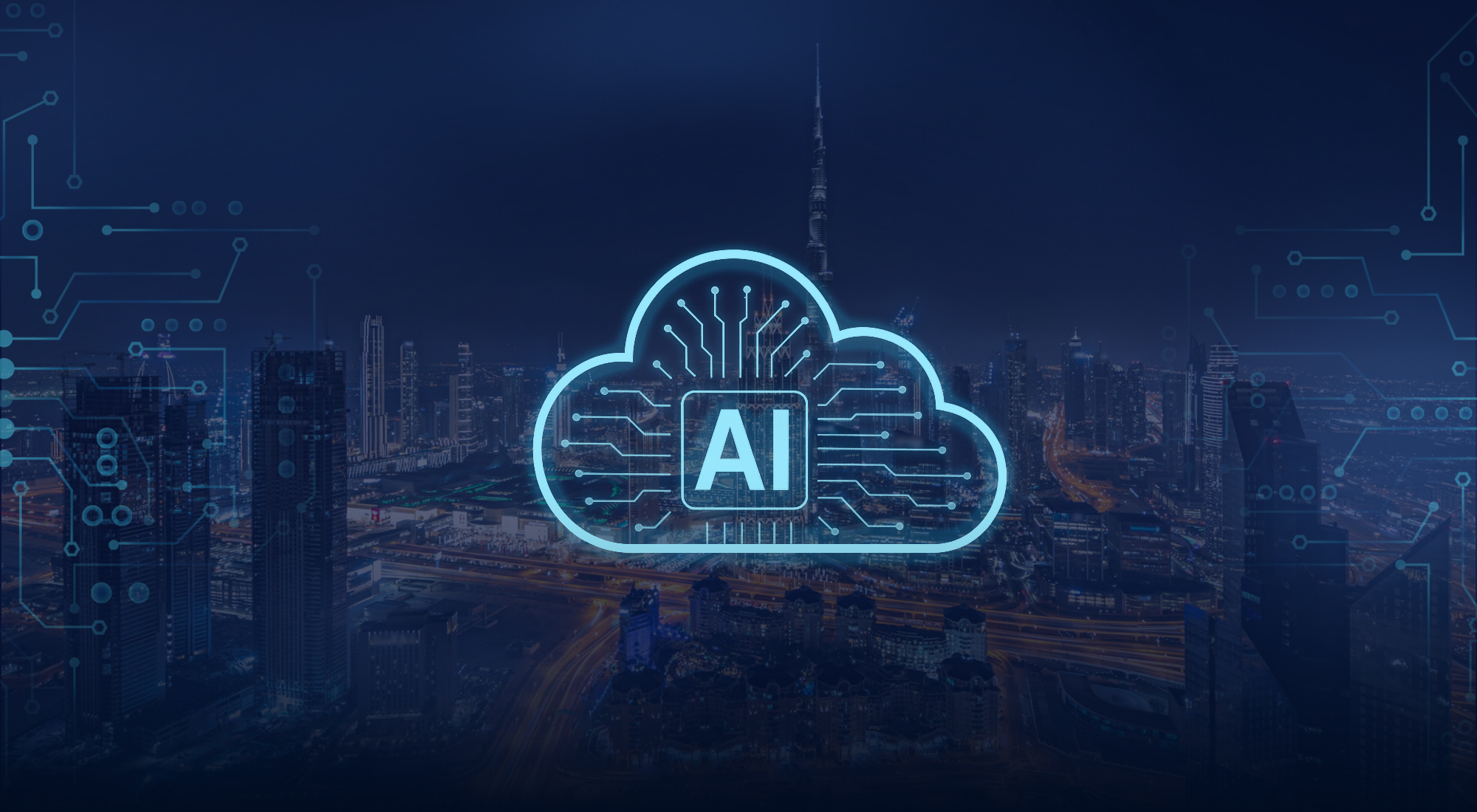Introduction
An analysis of the international security environment reveals that there is an upward linear trend in the efforts and tools to achieve cybersecurity. All actors, including states, institutions, companies and individuals, seek to find the best ways to achieve the desired goals and objectives in the field of cybersecurity.
With the acceleration of technological progress and increased global interdependence in the context of the Fourth Industrial Revolution,[1] the world is experiencing a continuous increase in cyber threats of all kinds, including cybercrime, terrorism, cyber espionage and cyber wars. Unprecedented systemic security risks and threats are undermining confidence and growth at the national and global levels. In light of the scramble between growing cybersecurity threats and efforts to achieve cybersecurity, there is always one certainty: the world of cybersecurity is constantly facing more penetration attempts and threats that require being prepared to address them.
This paper explores the most important cyber shifts and threats that the world may witness during 2023, based on the monitoring and tracking of main developments in the field of cybersecurity during previous years. It also seeks to explore ways and requirements to combat escalating cyber threats.
- Cyber landscape in 2022 and before
One of the most important areas of cyber transformation in 2022 and earlier was the realization by many countries and institutions that cyber capabilities have become an important field for exercising influence and achieving superiority and competitiveness. Following the Fourth Industrial Revolution and its accompanying manifestations of artificial intelligence, arsenals of conventional weapons are no longer the main criterion for measuring a country’s overall strength. In this context, many countries have developed national policies and strategies to keep pace with the strides of development in the Fourth Industrial Revolution, especially after the escalation of international conflicts in cyberspace. Such conflicts have become an integral part of international interactions considering the remarkable increase in rates of cyberattacks and cyber threats.
As an expected result of this international cyber scramble, the global defense cybersecurity market was valued at USD 16.22 billion in 2020, and is expected to reach USD 28.53 billion by 2026, registering a compound annual growth rate of approximately 10.51% during the forecast period (2021-2026).[2] At the regional level, Asia-Pacific is the fastest growing cybersecurity market, while North America is the largest.[3] The Middle East cybersecurity market is expected to grow at a compound annual growth rate of 17.1%, from USD 20.3 billion in 2022 to USD 44.7 billion in 2027.[4]
Currently amounting to nearly 4.7 million people, the cybersecurity workforce in 2022 grew by 11.1% over the previous year. However, the sector still suffers from a gap between the size of the actual workforce and that of the required workforce, estimated at 3.4 million people. With an annual increase in the workforce gap of 26.2%, cybersecurity is one of the economic sectors in dire need of more workers.[5]
In 2022, cyberattacks increased considerably. As far as the defense sector is concerned, with the increasing dependence of military organizations on the internet, the frequency and sophistication of cyberattacks are on the rise. Cyber threats seek to damage or disrupt information systems and hack critical information using various means, such as spyware, malware, phishing, and malicious attachments.[6]
In 2022, attempts were also made to hack prominent companies such as Microsoft, Nvidia and Grand Theft Auto maker Rockstar Games.[7] In addition to the tit-for-tat cyberattacks between many international actors,[8] usual corporations, hospitals, schools and government agencies in countries like Costa Rica, Montenegro and Albania all suffered damaging ransomware attacks. In Costa Rica, for example, the government declared a national emergency for the first time after a ransomware attack on its institutions.[9] In Albania, the government expelled Iranian diplomats from the country, also a first in the history of cybersecurity, following a destructive cyberattack by Iranian actors.[10]
In the same context, Trend Micro, a leading company in cybersecurity solutions, recorded an increase in the number of cyberattacks in the first six months of 2022 compared to the same period in 2021. Ransomware-as-a-service methods brought significant profits to ransomware developers and subsidiaries. Trend Micro blocked 63 billion threats in the first half of 2022, which is 52% more in the first half of 2022 compared to the same period in 2021. Government, manufacturing and healthcare were the top three sectors targeted by ransomware.[11]
A rise was also recorded in the number of cryptocurrency hacks in 2022, as hackers stole at least USD 3 billion in crypto during 2022.[12] This prompted major countries to invest more in cybersecurity[13] and conduct a lot of research and development activities in the field of artificial intelligence in order to obtain new low-cost, versatile applications across civil and military contexts.[14]
In light of this open international cyber race, and within the framework of the increasing digital shift in the UAE and the accompanying growing electronic threats, in their many and varied forms, for the state, society and their vital infrastructure, the UAE government has taken many measures, actions and initiatives to enhance its cybersecurity and secure its electronic space. Among the most important of those efforts is the establishment of a federal electronic network (FedNet) that allows interconnection and data exchange between all local and federal entities in the country, while enhancing communication channels between them using a unified and secure technological structure.
The UAE also established the National Computer Emergency Response Team (aeCERT), which aims to improve information security standards and practices, and protect the infrastructure of the communications and information technology sector from Internet risks and intrusions. Several initiatives have been taken in electronic safety, such as the Salim Awareness Initiative, the Emirates Cyber Ambassadors, the Cyber Extortion Initiative, the Cyber C3 Initiative, the Digital Citizenship Certificate, and the Cyber Pulse initiative. The latter seeks to combine the efforts initiated by the UAE in the field of cyber safety. It aims to ensure a safe digital transformation that enables all individuals and sectors to use the achievements of digital technology in a less threatening environment. It also seeks to raise awareness of good practices in cybersecurity and stimulate public interest in learning about cyber safety and security across different age groups in the UAE.
The Cyber Security Council has carried out a continuous series of training programs for different sectors and segments of society in the UAE to enhance the culture of social responsibility and secure the country’s cyberspace, which would contribute to promoting the concept of cyber national loyalty.[15] The efforts made by the UAE also include the enactment of the Law on Countering Rumors and Cybercrimes, which is one of the first laws in the region to criminalize acts or crimes that take place through the use of information technology, given their gravity and the consequent harm to the interests of the state and its agencies. The UAE also issued the National Cybersecurity Strategy with the aim of creating a safe and solid cyber environment for individuals and businesses while supporting cyber security standards.[16] According to the “We the UAE 2031” vision, the UAE aims to be among the first three countries in the field of cybersecurity.[17]
UAE efforts in the field of cybersecurity have won global recognition. Indeed, the UAE Cybersecurity Council was awarded the Global Achievement Award 2022 in the “Government Professionalism Award” category for Europe, the Middle East and Africa by (ISC)², an international cybersecurity organization.[18] The Council has also joined the Gartner Research Board, which reflects the advanced position of the UAE globally and its pioneering role in the field of cybersecurity.[19]
- Cyber landscape shifts in 2023
Future projects in the technology and communications sector are getting closer to digitization to match the new reality that depends on operational technology, the Internet of Things, and digital infrastructure. In light of the existing reality, cybersecurity threats are growing. In 2023, organizations should consider the following trends that affect cybersecurity.[20]
Augmented reality, virtual reality, and mixed reality
Augmented reality (AR), virtual reality (VR), and mixed reality (MR) technologies are likely to continue to expand and gain more presence due to their unique capabilities that enable users to access knowledge through the technological system. Augmented reality integrates visual, audio, and other sensory inputs into real-world settings to improve the user experience. In contrast, virtual reality enhances fictional realities. It is characterized by giving users the ability to interact with virtual environments, use their sensors and see the surroundings from a comprehensive three-dimensional perspective. Mixed reality technologies, which combine augmented reality and virtual reality technologies, allow users to control the existing elements of the augmented reality to experience them virtually.[21] Metaverse is one of the aspects worth watching in 2023, as it offers social environments that provide an immersive experience for users, enabling them to talk, exchange ideas, and collectively participate in innovation. The term “metaverse” is defined as a digital reality that combines social media, online entertainment games, augmented reality, virtual reality, and cryptocurrencies, to allow users to interact virtually. It also refers to a group of virtual worlds that include countless interactions between users, through each user’s avatar. The technology is not limited to playing games and entertainment, as it also allows many special interactions for businesses.[22]
Digital twins
Digital twins are a virtual simulation of processes located in the real world, enabling people to simulate, plan or manage all data, as well as know all alternative “what if” scenarios in a safe digital environment, which means building a bridge between the digital and real worlds.[23] With the growing amounts of data that need to be organized by users, 3D digital twins give users the ability to make quick decisions by enabling them to understand the data. Digital twins can be used in airports, cities, public transportation, and more. For example, if decision makers seek to improve the performance of their operations and obtain quality services in a specific domain, 3D digital twins that are fed in real time by planning and application data will help them analyze and understand how assets and resources are organized in greater depth and efficiency, ensuring achievement of the global target and related key performance indicators. By 2025, 80% of companies will adopt strategies aimed at unifying access mechanisms to private applications, web applications, and cloud computing through a unified platform for end-to-end security services provided by these solution providers, which would help the growth of the digital twinning trend.[24] In brief, 2023 may witness an increasing growth in the trend of digital twins for various official sectors within the national state, and perhaps for private sector companies as well.
Artificial intelligence and big data
2023 will see further spread of artificial intelligence (AI) applications in all fields. AI is unique in that it enables users to collect large amounts of data, analyze them rapidly, and increase efficiency in production and access. This year will also witness more countries relying on AI technologies to collect and classify unified information, link it, and present it in a timely manner to strategic decision makers. AI technology provides more accurate analyses and support tools for rapid decision-making, which also serves the national interest.
Increasing reliance by institutions on the zero-trust network structure
In light of the heavy losses suffered by countries and companies during the past years as a result of the damage caused by cyberattacks, the trend towards adopting the zero-trust network structure will increase during 2023. Zero Trust is a philosophy, not a product or technology. Its basic principle is “never trust, always verify”. Zero Trust will keep businesses and organizations safe from cyberattacks by managing identity and access, protecting network endpoints, securing the network through micro-segmentation, and applying threat protection to help prevent security threats and attacks. Zero Trust is an effective way to reduce data loss and prevent data privacy breaches, enabling business users to securely interact with any application, from any device, in any cyber environment.
- General trends of cybersecurity threats
Following the identification of some of the general trends that will affect cybersecurity during the coming period, we address in this part of the study the most important expected or ongoing threats to cybersecurity in 2023.
Increasing risks of metaverse worlds
With the increasing use of metaverse, Trend Micro cybersecurity experts warned of the possible advent of what they call the “darkverse”, where hackers can target non-fungible tokens (NFTs) used to identify digital identity in the metaverse to carry out phishing operations and spread ransomware, scams, malware, etc. This virtual parallel world can be used to launder money using virtual real estate and NFTs. The risk of personal attacks in the metaverse is likely to increase in 2023, especially against non-adult individuals.[25] Moreover, the representation of individuals by avatars in the virtual environments of the metaverse paves the way for a new era of espionage since the existence of a digital environment that includes almost all aspects of life, in terms of relationships, work and identity, will make it vulnerable to violations or manipulation by some individuals, groups or states.[26]
Global semiconductor shortage
The year 2023 may witness a global semiconductor shortage that will affect the electronic security of both public and private organizations. Some have even warned of a chip war.[27] Hardware prices may continue to rise as organizations need more computing power, such as servers, workstations, networking devices, and others. As semiconductors dwindle, attacks on education, healthcare, and industrial sectors are likely to increase, particularly targetting companies with sensitive data, top expertise and advanced technologies.[28]
More frequent ransomware attacks
Ransomware attacks of all kinds – whether popular, targeted or unknown vulnerability ransomware attacks – will remain among the biggest threats facing countries as well as public and private organizations. It is expected that 2023 will see a growth in financially motivated cyberattacks known as ransomware, especially as criminals increasingly target 5G, cloud computing and Internet of Things (IoT) devices, causing more disruptions and increasing new cybersecurity requirements. In other words, ransomware threats are likely to rise and continue their upward trend, as threat actors engaged in multifaceted extortion will continue to find more ways to extort their victims. According to some estimates, ransomware costs $265 billion annually.[29]
Internet of Things threats
Internet of Things threats occur when attackers scan for vulnerabilities in devices and attempt to connect to non-standard ports. Privacy and security are major concerns that must be taken into account in IoT. With all the IoT data moving around, the risk of privacy loss increases. Software can be hacked and your personal information could be misused. IoT threats are likely to increase in the healthcare sector in particular, as the increased use of these devices among patients opens up a wide range of vulnerabilities and entry points that criminals can use to gain access to patient data.[30]
Continued supply chain attacks
The X-Force 2022 Threat Intelligence Index found that at least 62% of organizations worldwide experienced a supply chain attack. Attackers enter enterprise networks through vulnerabilities or compromised devices found in the network of a third party or partner that is also part of the value or supply chain.[31] Such attacks on supply chains are expected to continue as cybercriminals acquire more advanced tools and techniques to overcome security measures and best practices. Therefore, more investment is needed in cybersecurity.
ICS/OT attacks
Industrial Control Systems (ICS)/Operational Technology (OT) consist of existing software or hardware that monitor and detect change in industrial equipment, systems and processes. ICSs are among the hottest new targets for cybercriminals. ICS cyberattacks have increased dramatically since COVID-19, going beyond traditional attacks on enterprise networks, targeting in particular National Critical Infrastructure (NCI) and public facilities. Last year, the sectors most targeted by cyberattacks were business services (27.3%), health care and public health (26.9%), commercial facilities (25.6%), financial services (25.1%), critical manufacturing (23.3%), communications (22.9%), defense industries (21.1%), and energy (20.7%).[32] The rise of cyberattacks on ICSs is potentially attributed to the increased investment made by hackers in targeting ICSs over the past five to ten years, which will continue to accelerate in the security threat landscape of ICSs. In fact, hackers have demonstrated good knowledge of control system components, industrial protocols, and engineering processes. Examples of such impactful attacks include CrashOverride attacks on the electricity sector, remote access human machine interface hijacking in water management, ICS ransomware in manufacturing and energy sectors, and the latest scalable attacks targeting multiple Incontroller/Pipedream sectors.[33] ICS/OT attacks are more disruptive, with potential for physically destructive capabilities. Threat intelligence underpins the fact that industrial security advocates across all sectors must tackle new challenges and face critical threats. It is expected that ICS/OT attacks will continue in 2023, potentially causing huge material losses for organizations and countries.
Mobile attacks
Mobile malware cyberattacks were up 500% in the first few months of 2022, with Android devices being the most common targets.[34] As mobile phones become increasingly important, they become an easy target for attackers due to the difficulty of detecting spoofing. Malicious apps and websites, mobile ransomware, phishing, Man-in-the-Middle (MitM) attacks, advanced jailbreaking and rooting techniques, hardware and OS exploits all pose major threats to mobile devices.[35] In this context, 2023 will see an upward trend in attacks on mobile devices globally.
Escalation of regional cyberattacks
In light of the mutual cyberattacks between Israel and Iran over the past year, it is expected that Iran will use its cyber tools in a more aggressive manner to advance its regional interests. Hence, Iran is likely to continue targeting Israel and other countries in the Middle East, and vice versa. Iran will try to create more of a balance of power to serve its own interests by regionally-focused cyberattacks throughout 2023.[36] An increase in Iranian cyberattacks against GCC countries is also expected. Indeed, Iran poses a real cybersecurity threat to Saudi Arabia and other GCC countries, and could target key industries such as telecommunications and oil and gas.[37]
Rise of politically-motivated attacks
A significant rise in politically-motivated cyberattacks is expected in 2023. Political crises and armed conflicts, both existing and emerging, certainly have a significant impact on cybersecurity, as civilian data, devices and networks in government services, critical infrastructure, or companies, are being disrupted or deliberately destroyed in clear violation of the rules of war.[38] Politically-motivated cyberattacks are grouped into cyberterrorism, cyberespionage, and cyberwarfare.
The world will witness an escalation in cyberterrorism and cyberwarfare this year. Cyberterrorism means tampering with electronic systems just to create panic or fear. It depends on the use of scientific and technical capabilities, and the exploitation of means of communication and information networks in order to intimidate, terrorize, harm or threaten others. Terrorist groups intending to sow fear and cause destruction and loss of lives often attack critical infrastructure. Examples of such vulnerable infrastructure include air traffic control, electrical grids, and nuclear power plants.[39]
Cyberattacks are quickly turning into a new model of modern warfare, which emerged for the first time in the Gulf War (1991), then the Kosovo War (1999), and developed more clearly in the cyber war between Estonia and Russia in 2007 and the cyber war between Georgia and Russia in 2008.[40]
The Russia-Ukraine war, which has been going on since February 2022, involves a cyber conflict mainly between Russia and Ukraine, but also between Russia and Western countries. In the past year, based on its cyber capabilities and the size and scope of the attacks it launched, Russia was a leading cyber power. This trend is expected to strengthen this year (2023), especially in the context of the Ukraine war and the “new cold war” that is taking shape between Russia and its allies on the one hand, and the USA and its allies on the other.
- Requirements to confront escalating threats
In light of the increasing escalation of cyberattacks, it is expected that cyber threats will emerge that primarily target new uses such as electronic gaming platforms, virtual reality worlds, technologies used by children in schools and entertainment, as well as the metaverse, especially that the level and sophistication of security in many of these new platforms is not reliable. The first threat to them will remain the users’ lack of awareness of the potential risk of hacker attacks and tricks to steal their data and money.[41] Therefore, the development of technical countering methods will in no way obliterate the need for international cooperation, awareness programs, or new legislation to reduce the escalating risks of cybersecurity.
The World Economic Forum has identified three priorities to address the growing cyber threats: building cyber resilience, enhancing global cooperation, and understanding future technology and networks.[42]
Building cyber resilience
Cyber resilience refers to the ability of a system to optimally recover from a shock, either by bouncing back to its original state or to a new modified state. It assumes that minor or even major disruptions are inevitable, and that absolute security is impossible. Cyber resilience can be thought of as a “Plan B” in case something goes wrong.[43] Cyber resilience can be enhanced by developing and framing future solutions, and promoting effective practices across digital systems.
In fact, there is an urgent need to work on developing information system security programs and enhancing their resilience in the face of cyber threats. It should be noted here that there is a growing segment of cybersecurity services companies that offer consulting services, including investigations to determine the source of cyberattacks. Examples of such companies include FireEye, CrowdStrike, Kaspersky Lab, Novetta, Symantec, and Micro Trend. The maturity of cybersecurity companies, the development of advanced source identification methods, and the increasing complexity of an interconnected world reflect the growing scope, threat, and potential harm of cyberincidents. In this context, it is possible to benefit from such companies in strengthening information systems, not only in order to enjoy great resilience capabilities, but also to technically deal with cyber threats.[44]
Promoting global cooperation
This means increasing global cooperation between stakeholders from the public and private sectors by strengthening collective response to cybercrime and jointly addressing key security challenges.
Understanding future networks and technology
This refers to the identification of future cybersecurity opportunities and challenges in relation to technologies of the Fourth Industrial Revolution, and designing solutions that help build trust. In addition, there are several requirements and priorities for achieving cybersecurity in 2023, which can be summarized as follows:
- Raising awareness of cyber security:
With the spread of cyber threats on a large scale, countries must invest in awareness programs to educate citizens and employees of organizations about protecting sensitive data to prevent unwanted access to systems and networks. It is important to advise metaverse users to remain cautious and aware of what they are doing in this world and to deal with platforms that are serious about protecting their users.
- Cybersecurity governance and risk management:
This includes identifying threats to the country/organization and maintaining an inventory of all ICS assets, including hardware, software and supporting infrastructure technologies, then moving to the development of ICS cybersecurity policies, procedures, trainings and educational materials, and developing and applying incident response procedures that integrate IT and OT operations.
- Developing new rules and legislation:
The increasing growth of attacks and threats in cyberspace requires the continued development of new regulations and legislation to meet cybersecurity requirements and keep pace with the rapid developments in cybersecurity threats.
- International cooperation:
In theory, effective cyber deterrence requires a wide-ranging scheme of offensive and defensive cybercapabilities supported by a robust international legal framework as well as the ability to attribute an attack to an attacker without any doubt. Defensive cybercapabilities and the design of better legal tools are relatively uncontested. Many international organizations and bodies have taken steps to raise awareness, establish international partnerships, and agree on common rules and practices. One key issue is the harmonization of law to facilitate the prosecution of perpetrators of cybercrime.
While there is wide agreement on what steps are necessary to tackle international cyber-crime, states are unwilling to completely forgo offensive and aggressive use of cyberspace. Due to this, and increasingly so since the discovery of Stuxnet, efforts are underway to control the military use of computer exploitation through arms control or multilateral behavioral norms, agreements that might pertain to the development, distribution, and deployment of cyber-weapons, or to their use. However, traditional capability-based arms control will clearly not be of much use, mainly due to the impossibility of verifying limitations on the technical capabilities of actors, especially non-state ones. The avenues available for arms control in this arena are primarily information exchange and norm-building, whereas structural approaches and attempts to prohibit the means of cyber war altogether or restricting their availability are largely impossible due to the ubiquity and dual use nature of information technology.[45]
The complexity of modern cybersecurity requires rapid cooperation between various stakeholders in order to combat electronic threats to sectors, individuals, and even entire countries. International collective action is the only way to reach the desired results to confront the dangers and threats of cybersecurity. In other words, a strong cybersecurity alliance must be built in which all countries and multilateral organizations participate. The human element is still the weakest link in this field; research has shown that 88% of security breaches occur as a result of human errors.[46] Therefore, priority must be given to investing in raising cybersecurity awareness, strengthening educational and training programs for users and professionals, and improving the culture of security within organizations and companies. Emphasis should also be placed on enhancing youth capabilities in cybersecurity as one of the basic ingredients for business development in light of increasing reliance on digital technologies.
Conclusion
2023 will see many digital battles and cyber threats. Therefore, countries must develop their technologies and raise their readiness to avoid the risks and consequences of those cyber battles, which will not end in any way. It also requires establishing international task forces to combat cyberattacks, actively sharing information between the public and private sectors and taking joint steps to stop malicious cybersecurity actors.
References
[1] The Fourth Industrial Revolution is based on fusing technologies across the physical, digital, and biological worlds, and on cyber-physical systems, which merge the real and virtual worlds. The Fourth Industrial Revolution constitutes a fundamental change in the environment in which we live, the way we work, and the ways in which we relate to each other. Among the most important features of the Fourth Industrial Revolution, which are inseparable from the promotion of cybersecurity, are artificial intelligence, the Internet of Things, the Internet of Services, robots, big data, virtual reality, augmented reality, mixed reality, metaverse technology, blockchain technology, and 3D printing technology. See Klaus Schwab, The Fourth Industrial Revolution (New York: Crown Business, 2017).
[2] Mordor Intelligence, Defense Cyber Security Market: Growth, Trends, Covid-19 Impact, and Forecasts (2023-2028), January 2022, https://bit.ly/3imO51z.
[3] Ibid.
[4] “Cybersecurity Market in the Region at USD 44.7 Billion by 2027,” Youm7, August 17, 2022, https://bit.ly/3iqC8aY.
[5] (ISC)², (ISC)² Cybersecurity Workforce Study 2022, https://bit.ly/3w57Y0k.
[6] Mordor Intelligence, Defense Cyber Security Market: Growth, Trends, Covid-19 Impact, and Forecasts (2023-2028), January 2022, https://bit.ly/3imO51z.
[7] Kevin Poireault, “Grand Theft Auto Publisher Rockstar Games Hacked,” Infosecurity, September 20, 2022, http://bitly.ws/zqWy.
[8] Raghda El-Behi, The Microsoft Report: A Reading into the Cyber Conflict between Russia and Ukraine, Egyptian Center for Strategic Studies, July 3 , 2022, https://bit.ly/3jRBdRf.
[9] “Costa Rica Declares National Emergency amid Ransomware Attacks,” The Guardian, May 12, 2022, http://bitly.ws/zqXr.
[10] “Albania Cuts Iran Ties over Cyberattack, U.S. Vows Further Action,” Reuters, September 7, 2022, https://reut.rs/3Gp50bL.
[11] Trend Micro, Trend Micro 2022 Midyear Cybersecurity Report: Defending the Expanding Attack Surface, August 31, 2022, https://bit.ly/3X3yJhG.
[12] Lorenzo Franceschi-Bicchierai, “What’s Next in Cybersecurity,” MIT Technology Review, November 28, 2022, https://bit.ly/3jNLqy8.
[13] Forrest E. Morgan, Benjamin Boudreaux, Andrew J. Lohn, Mark Ashby, Christian Curriden, Kelly Klima, and Derek Grossman, “Military Application of Artificial Intelligence: Ethical Concerns in an Uncertain World,” RAND Corporation, https://bit.ly/3VUcoBN.
[14] Kelley M. Sayler, Artificial Intelligence and National Security, Congressional Research Service, November 2020, http://bitly.ws/zqY8.
[15] Mohammed Al-Kuwaiti, “Divergent Trends in Cybersecurity: The Cyber Pulse Initiative,” Lecture Paper (3), Trends Research and Advisory, September 2022; Mohammad Masoud Al-Ahbabi, “Cybersecurity Pulse,” Al-Watan, September 5, 2022; Imad Al-Ali and Ahmed Al-Nuaimi, “The Cyber Security Council Reviews the Latest Innovations and Digital Projects during GITEX 2022,” WAM News Agency, October 9, 2022, https://bit.ly/3jZZCo1.
[16] United Arab Emirates’ Government Portal, “Cyber Safety and Digital Security,” August 2, 2022, http://bitly.ws/zqZ3.
[17] United Arab Emirates’ Government Portal, “‘We the UAE 2031’ Vision,” December 7, 2022, http://bitly.ws/zqZh.
[18] Khoder Nashar and Mohd Aamir, “/ISC/2 Awards Global Achievement Award 2022 to UAE Cybersecurity Council,” Emirates News Agency – WAM, September 19, 2022, http://bitly.ws/zr22.
[19] “Cybersecurity Council Joins the Gartner Global Research Board,” Emarat Al-Youm, October 17, 2022, https://bit.ly/3vMyrzq.
[20] “Obvious Technologies Shares the Three Most Important Expectations for 2023,” Aetoswire, December 29, 2022, https://bit.ly/3vBoswR.
[21] Diana R. Carl, “The Shifting Realities of Performance Improvement: VR, AR, MR,” Performance Improvement 57, no. 4 (2018): pp. 6–9, https://doi.org/10.1002/pfi.21774.
[22] Alaa Momani, “What Is the Metaverse?” Skyline University College, December 22, 2022, http://bit.ly/3CSrVuW.
[23] Hugh Boyes and Tim Watson, “Digital Twins: An Analysis Framework and Open Issues,” Computers in Industry 143 (2022), https://doi.org/10.1016/j.compind.2022.103763.
[24] “Warnings That the Cost of Cybercrime Will Rise to USD 10.5 Trillion,” Independent Arabia, June 28, 2022, https://bit.ly/3ItROF4.
[25] Nayla Al-Saliby, “The Most Prominent Cybersecurity Threats in 2023,” Mc-doualiya, January 2, 2023, https://bit.ly/3GFc6uc.
[26] Mike Elgan, “Will the Metaverse Usher in a Universe of Security Challenges?” Security Intelligence, February 7, 2022, http://bit.ly/3iHSbRS.
[27] Chris Miller, Chip War: The Fight for the World’s Most Critical Technology (New York: Scribner, 2022).
[28] “What Does the Electronic Future Hold? Cybersecurity Experts Reveal Predictions for 2023,” Alroya, December 7, 2022, https://bit.ly/3jJ8yhj.
[29] Anupama A and Amritha Saravanan, “7 Cybersecurity Trends to Watch for in 2023,” Manage Engine, October 31, 2022, https://bit.ly/3WJyeJk.
[30] Hwaiyu Geng, ed., Internet of Things and Data Analytics Handbook (Hoboken, NJ: John Wiley & Sons, 2016).
[31] Ibid.
[32] Dean Parsons, The State of ICS/OT Cybersecurity in 2022 and Beyond, SANS Institute, October 2022, https://bit.ly/3COKyjk.
[33] Ibid.
[34] Joseph Henry, “Mobile Malware Cyberattacks Rise to 500% on the First Few Months of 2022,” Techtimes, March 9, 2022, https://bit.ly/3CvlVIo.
[35] Ibid.
[36] Ali Al-Ghani, “A Swift Look at the Iranian Cyber Program,” International Journal of Formal Sciences: Current and Future Research Trends 13, no. 1 (2022): pp. 7-11; Reza Solgi, Hasan Khodaverdi, and Zohreh Postinchi, “New State-Nation Security Challenges in Cyberspace with Emphasis on the Islamic Republic of Iran,” Political Sociology of Iran 4, no. 4 (2022): pp. 326-350, https://doi.org/10.30510/PSI.2022.315683.2651.
[37] Kate Oglesby, “Iran Still Poses Major Cybersecurity Threat to Gulf: Experts,” Al-Arabia News, November 3, 2022, https://bit.ly/3IPt8qX.
[38] “What Does the Electronic Future Hold? Cybersecurity Experts Reveal Predictions for 2023,” Alroya, December 7, 2022, https://bit.ly/3jJ8yhj.
[39] “2021 ICS Cybersecurity Year in Review,” Dragos, https://bit.ly/3W8reVn.
[40] Christopher Fitzgerald Wrenn, “Strategic Cyber Deterrence (PhD Thesis, Tufts University – Fletcher School of Law and Diplomacy, 2012), http://bitly.ws/zqSA.
[41] Nayla Al-Saliby, “The Most Prominent Cybersecurity Threats in 2023,” Mc-doualiya, January 2, 2023, https://bit.ly/3GFc6uc.
[42] World Economic Forum, “Centre for Cybersecurity,” http://bit.ly/3ZEz8ZC.
[43] Myriam-Dunn Caveltry, “Cyber-Security,” in Alan Collins ed., Contemporary Security Studies, 5th Edition (Oxford, New York: Oxford University Press, 2019): pp. 374-75.
[44] Mohammed Al-Kuwaiti, “Divergent Trends in Cybersecurity: The Cyber Pulse Initiative,” Lecture Paper (3), Trends Research and Advisory, September 2022.
[45] Myriam-Dunn Caveltry, “Cyber-Security,” in Alan Collins ed., Contemporary Security Studies, 5th Edition (Oxford, New York: Oxford University Press, 2019): p. 375.
[46] Aloysius Chiang, “The UAE Focuses on Cybersecurity to Meet the Requirements of the Digital Age,” Albayan, October 19, 2022, https://bit.ly/3Qjn9MI.








